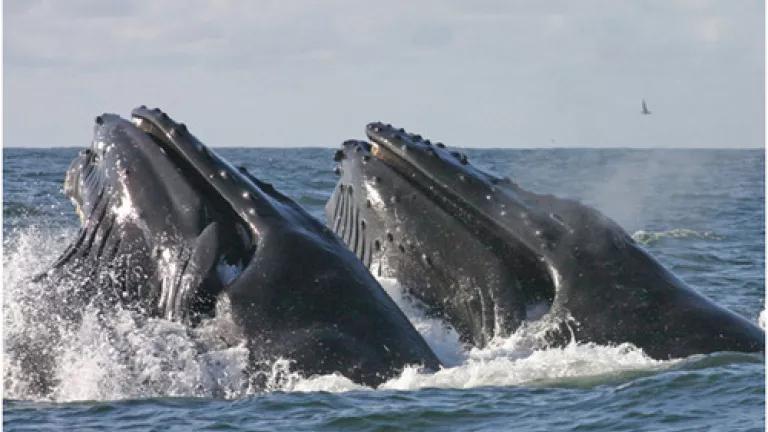
This week American scientists proposed a market-based approach to “saving” whales: set tradable quotas for them. Establishing a “cap and trade” market for whaling – while academically interesting – is a terrible idea.
It would legalize commercial whaling, which has been banned by the International Whaling Commission (IWC) since the moratorium on commercial whaling took effect in 1986. It would reward the three nations that continue to hunt whales commercially – Japan, Norway, and Iceland – for defying or exploiting loopholes in the moratorium. And it would create an entirely new market for whalers, especially those nations that would like to hunt but nevertheless abide by the moratorium.
The authors of this “market approach” – published in the January 12, 2012 issue of Nature – propose to set a price tag on whales. They advocate for whale quotas that could be bought and sold, creating a market that would allow conservation groups to save whales by buying quotas and whalers to profit from whales (even without killing them) by selling quotas. The scientists claim this “market approach” would reduce the number of whales caught and “suitably compensate” whalers.
Who’s being saved here: the whales or the whalers?
Trading whale credits is a very different matter from capping and trading carbon – a byproduct of energy production in every country in the world today. To reduce reliance on carbon-based energy sources – in order to fight global warming – such a system is intended to encourage the difficult transition to renewable energy. By contrast, whaling is a dying industry, with no economic future, only a handful of countries engaged in it, and few consumers interested in the countless tons of frozen whale meat slowly rotting in warehouses in Iceland, Japan, and Norway. Adopting a system of tradable credits for whales would only perpetuate an industry whose time has passed – and would be a major step in the wrong direction for whale conservation.
The moratorium on commercial whaling isn’t perfect. Despite the moratorium, Japan, Norway and Iceland continue to kill whales for profit (setting self-allocated quotas of around 2,000 takes per year). But the moratorium has saved hundreds of thousands of whales since 1986. Overturning the moratorium and legalizing the slaughter of whales under the guise of a “market approach” is not the solution.
Putting a price tag on whales also raises tricky political and economic issues. Which nations would receive whaling quotas? The authors suggest dividing the majority of quotas between whaling and non-whaling nations based on historical whaling patterns. But what about those nations – like Korea – that would like to whale but don’t because of the moratorium? Shall we reward the rogue practices of Japan and Iceland while penalizing law-abiding nations?
And what is the price of a whale? The authors suggest $13,000 for a minke whale and $85,000 for an endangered fin whale. Is $85,000 really the going rate of an endangered species?
This “market approach” is just another proposal to legalize the killing of whales and should be flatly rejected. Another proposal to legitimize commercial whaling by allowing quotas was floated before the IWC several years ago. That proposal – backed by both the Bush and Obama administrations – would have suspended the ban on commercial whaling for 10 years and opened up a designated whale sanctuary to commercial whaling. Eleventh-hour action by NRDC, renowned actor and marine mammal activist Pierce Brosnan, and other conservation groups helped focus global outrage on the backroom deal and led to its defeat. Hundreds of thousands of messages were sent to the White House opposing the proposal, and the IWC ultimately shelved it. We wouldn’t welcome its return – in any guise.
Photo courtesy of NOAA

